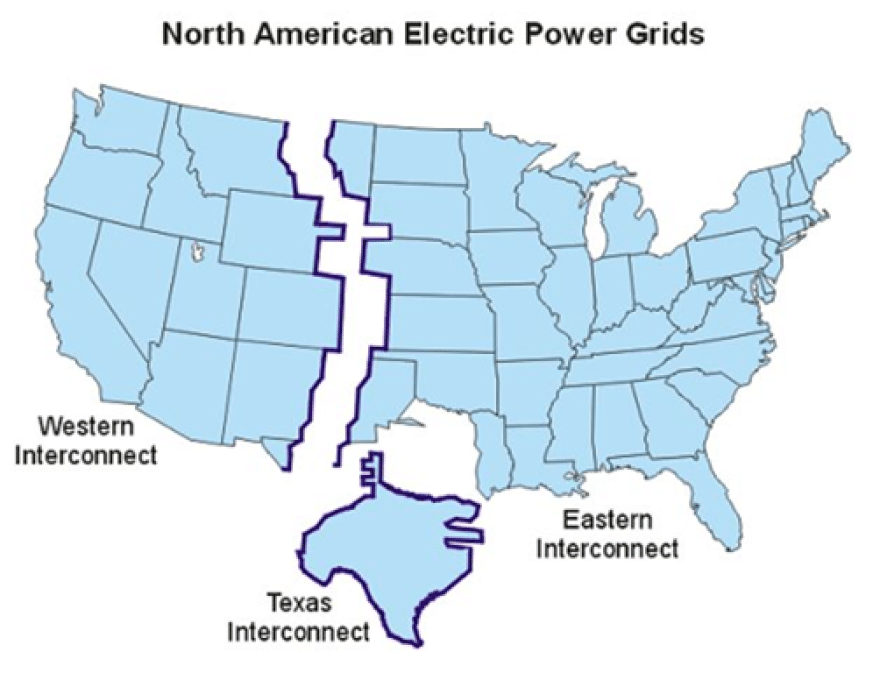Oregon’s increase in cost-effective energy-efficient technology is lowering power demand, according to a recent article on JPR.org. This lower demand allows power companies to forecast and plan for future energy needs in the region. According to the Northwest Power and Conservation Council’s findings, the Pacific Northwest used 160 average megawatts less because of energy efficiency in 2023.
In Oregon and all over the country, energy demand is increasing as more people switch to electric appliances and vehicles and as the number of high-tech facilities and data centers increases. The JPR article reports that energy efficiency is key to balancing and reducing power demand. As you might have guessed, they say that adding renewable energy, like solar and battery backup, will play a big part in reducing the ever-increasing demand and helping to maintain grid balance (supply/demand).
Electrical Grid Stability in Texas
Take Texas, for example. In 2023, the state’s power grid struggled with demand almost exceeding supply. This year, however, the grid has remained stable, in large part because of its reliance on the burgeoning solar industry.
According to the Texas Energy Department, the state’s solar buildout follows a previous wind boom. While wind power buildout has slowed, however, utility-scale solar (solar facilities that generate electricity and supply it to the grid for utilities) has increased, because it’s cheap and far easier to install. Texas is known as a sunny state, with the larger cities’ sunlight days falling somewhere between 230 and 300 per year. As a result, large-scale solar farms are hugely effective renewable energy sources. Texas installed more utility-scale solar than any other state in the past year.

A notable element of Texas’s renewable energy investment is its new reliance on battery storage. Texas has exceeded California in both large-scale solar farms and battery storage. The U.S. Department of Energy expects battery storage capacity in the country to double in 2024, and California and Texas are projected to be responsible for 82% of this new battery storage capacity.
What does Solar + Battery Expansion in Texas Mean for Oregon and the Rogue Valley?
Texas, which relies on its own grid, is somewhat of a canary in a coal mine for the country as a whole, including Oregon. Rising temperatures here in the Rogue Valley and ever-increasing energy demand result in increased grid demand that can be offset by solar and battery storage. Coupled with the continued rise in energy costs and our state’s need for wildfire mitigation, we expect to see more solar and battery storage expansion statewide.
As an aside, the Business Council for Sustainable Energy ranked the top 10 US states leading the country in the transition to clean energy. As you can imagine, Texas and California are among the Top 10. Oregon didn’t quite make the list, but it falls at # 11, in part because of its unique focus on energy equity. In 2021, Oregon passed the Energy Affordability Act that included provisions to support marginalized energy customers, and happily, the Housing Authority of Jackson County (HAJC) has been able to utilize this support in local projects.
True South Solar Installations Support Community Organizations and Grid Stability
In 2017, True South Solar worked with HAJC to install solar at Freedom Square II, a multi-family complex in White City. HAJC qualified for the Energy Trust’s equitable solar initiative, which provides incentives to affordable multifamily housing projects, and nonprofit organizations serving specific communities. The site now has seven buildings including 50 affordable units for the area’s underserved residents. The solar at the complex helps offset HAJC’s energy costs, allowing HAJC to reinvest in future housing projects. The added benefit is that the complex can produce a portion of its energy, thus reducing power demand on the electrical grid.
Just this summer, True South Solar installed another array for a similar HAJC project at Prescott Gardens in Medford. The project will provide 98 housing units, and the complex will also demand less from the power grid, thanks to the addition of the HAJC solar.
Our Conclusion
With more than 200 days of sunshine annually in Southern Oregon, ample energy is available to power our homes and businesses locally with solar and battery storage. By capturing and using this energy, we ease the pressure on the electrical grid, decrease the need to import energy produced elsewhere and promote energy independence for the valley.

